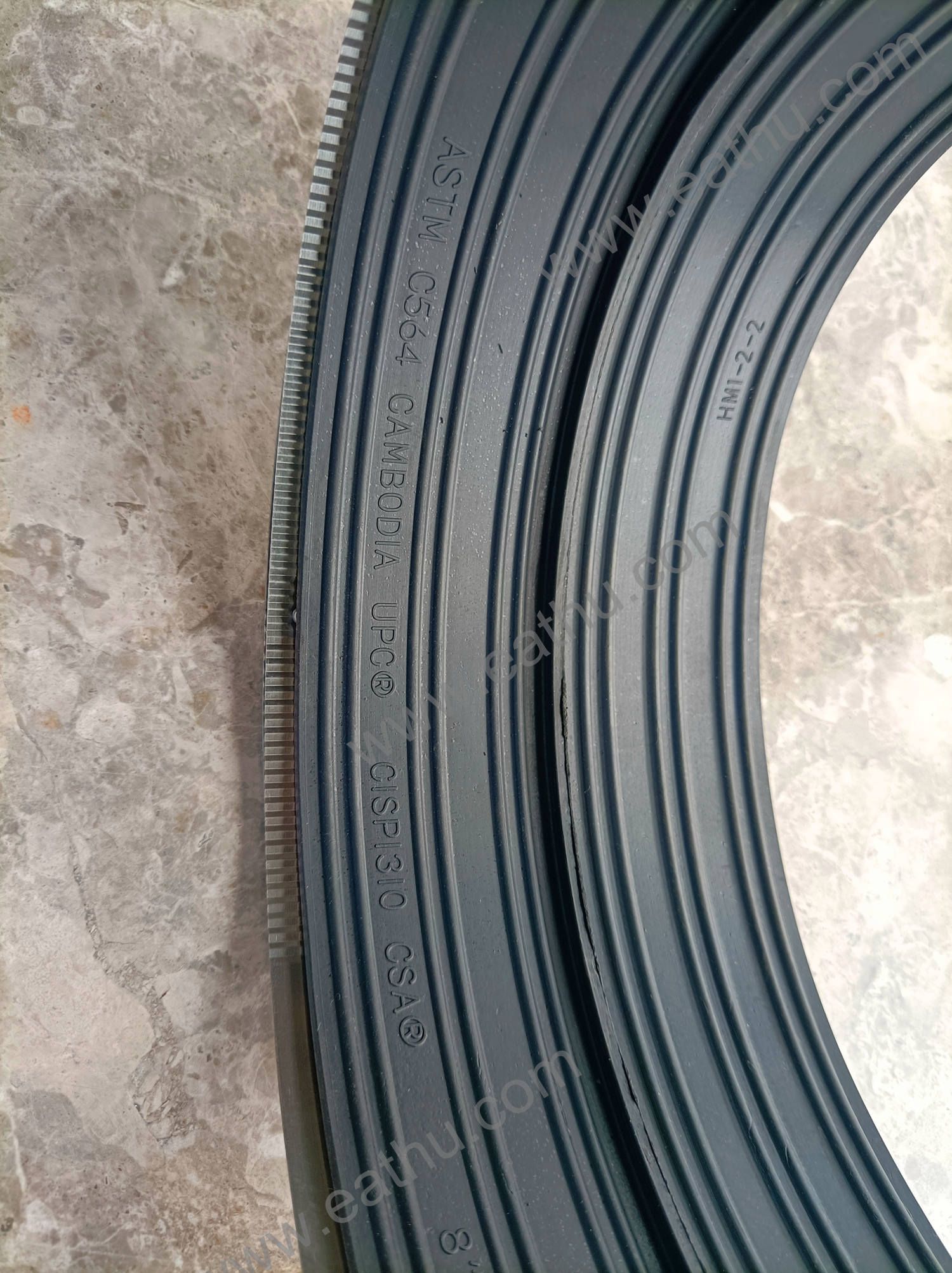Export Office: 21Floor, No.5 Nanhai Zhi Road,Qingdao, Shandong ,China
Work Shop: Beian Industrial zone, Qingdao,Shandong,China
+86 532 88256399
Martin
Inquiry now
The importance of sealing technology
The consequences of sealing failure are very serious, the lighter "running, emitting, dripping, and leaking" will cause the waste of energy and resources, and the more serious will cause the operation to fail, and even cause fire, explosion, environmental pollution and other consequences. Endanger personal safety! According to preliminary statistics, more than 1/3 of the quality accidents of mechanical equipment and weaponry are caused by seal failure.
The development of sealing materials
With the development of science and technology, the working conditions of the sealing structure have become more demanding. Due to the greatly increased temperature, pressure and corrosivity of the fluid being sealed, traditional sealing materials such as felt, hemp silk, asbestos silk, putty, etc. can no longer meet the requirements of use, and they are gradually being replaced by rubber and other synthetic materials. Synthetic materials such as rubber are generally high-molecular polymers, with different characteristic functional groups (such as: chlorine, fluorine, cyano, vinyl, isocyanate, hydroxyl, carboxyl, alkoxy, etc.) on the macromolecular chain. Active cross-linking point. Under the action of catalysts, vulcanizing agents, or high temperature and high energy rays, macromolecules transform from linear and branched structures into spatial network structures. This process is called vulcanization. After vulcanized rubber or other synthetic materials, macromolecules lose their original fluidity and are called elastomers with high elastic deformation.
Commonly used rubber and synthetic materials are: natural rubber, styrene butadiene rubber, neoprene, cyanide butadiene rubber, ethylene propylene rubber, butyl rubber, polyurethane rubber, acrylic rubber, fluorine rubber, silicone rubber, etc.
Performance indicators for determining the pros and cons of sealing materials
1. Tensile performance
Tensile performance is the first consideration for sealing materials, including: tensile strength, constant elongation stress, elongation at break and permanent deformation at break. Tensile strength is the maximum stress at which the specimen is stretched to break. The constant elongation stress (constant elongation modulus) is the stress reached at the specified elongation. The elongation is the deformation of the sample when it is subjected to a specified tensile force, and is the ratio of the increase in elongation to the original length. The elongation at break is the elongation when the sample is broken. The permanent deformation at break is the residual deformation between the marking lines after the specimen is broken.
2. Hardness
Hardness indicates the ability of the sealing material to resist external forces and is also one of the basic properties of the sealing material. The hardness of the material is related to other properties to a certain extent. The higher the hardness, the greater the strength, the smaller the elongation, the better the wear resistance, and the worse the low temperature resistance.
3. Compression performance
Rubber seals are usually in a compressed state. Due to the viscoelasticity of the rubber material, the pressure will decrease over time when compressed, which is manifested as compression stress relaxation; after the pressure is removed, it cannot return to its original shape and manifests as compression permanent deformation. This phenomenon is more obvious in high temperature and oily media, and this performance is directly related to the durability of the sealing ability of the sealing product.
4. Low temperature performance
Used to measure the low-temperature characteristics of rubber seals, the following two methods to test low-temperature performance are introduced: 1) Low-temperature retraction temperature: stretch the sealing material to a certain length, then fix it, quickly cool to below the freezing temperature, and reach equilibrium Loosen the test piece and increase the temperature at a certain speed. When the recording pattern retracts by 10%, 30%, 50%, and 70%, the temperature is represented by TR10, TR30, TR50, and TR70, respectively. The material standard uses TR10 as an indicator, which is related to the brittle temperature of rubber. Low temperature flexibility: After the sample is frozen at a specified low temperature for a specified time, it is bent back and forth at a specified angle to investigate the sealing ability of the seal after repeated action of dynamic load at low temperature.
5. Oil resistance or medium resistance performance
In addition to contact with petroleum-based, diesters, and silicate oils, the sealing material sometimes also contacts corrosive media such as acids and alkalis in the chemical industry. In addition to being corroded in these media, high temperatures can also cause expansion and strength reduction, and hardness reduction; at the same time, plasticizers and soluble substances in the sealing material are extracted, resulting in a reduction in mass, a reduction in volume, and leakage. Generally, at a certain temperature, after immersing in the medium for a period of time, the changes in its mass, volume, strength, elongation, and hardness are measured to evaluate the oil resistance or medium resistance of the sealing material.
6. Anti-aging performance
The performance of the sealing material will deteriorate after being exposed to oxygen, ozone, heat, light, moisture, and mechanical stress, which is called the aging of the sealing material. The aging resistance (also called weather resistance) can be expressed by the change in the strength, elongation, and hardness of the pattern after aging. The smaller the rate of change, the better the aging resistance.
Note: Weather resistance refers to a series of aging phenomena such as fading, discoloration, cracking, chalking and strength reduction of plastic products due to the influence of external conditions such as sunlight, temperature changes, wind and rain. Among them, ultraviolet light Irradiation is a key factor in promoting plastic aging.
Introduction to the materials of commonly used valve seals
1. Nitrile rubber (NBR)
Nitrile rubber (NBR) also called nitrile-butadiene rubber, is an irregular copolymer synthesized by emulsion polymerization of butadiene and acrylonitrile monomer. Its molecular structure is: —(CH2-CH=CH)m-(CH2-CH2-CH)n -CN
Nitrile rubber was first developed in Germany in 1930. It is a copolymer of butadiene and 25% acrylonitrile. Because its aging resistance, heat resistance, and abrasion resistance are better than natural rubber, it is valued by the rubber industry. Due to its excellent heat resistance, oil resistance and mechanical properties, it has now become the main product of oil-resistant rubber, accounting for about 80% of all oil-resistant rubber demand. Nitrile rubber has made great progress in the 1950s. There are more than 300 grades so far. According to the acryl cyanide content, it can be divided into: acryl cyanide content in the range of 18% to 50% acryl cyanide content: acryl cyanide content> 42% It is very high cyanide grade, 36%~41% is high cyanide grade, 31%~35% is medium high cyanide grade, 25%-30% is medium cyanide grade, and 24% or less is low cyanide grade. The most widely used in the industry is low cyanide grade cyanide -18 (combined acrylonitrile content 17%-20%), medium cyanide grade cyanide cyanide-26 (combined acrylonitrile content 27%-30%), and high cyanide grade Butadiene cyanide-40 (combined acrylonitrile content 36%-40%). Increasing the content of acrylonitrile can significantly improve the oil resistance and heat resistance of cyanide butadiene rubber, but not more is better, because the increase of acrylonitrile content will also reduce the low temperature performance of the rubber. NBR is mainly used to manufacture rubber products that work in petroleum-based hydraulic oil, lubricating oil, kerosene and gasoline. Its working temperature is -50-100 ℃; it can be used for short-term work at 150 ℃, and it works in air and ethanol-glycerin antifreeze is -45-100 ℃. Nitrile rubber has poor aging resistance. When the ozone concentration is high, it will quickly age and crack. It is not suitable for long-term work in high-temperature air, and it cannot work in phosphate ester fire-resistant hydraulic oil.
The general physical properties of Nitrile rubber: 1) The Nitrile rubber is generally black, and the color can be adjusted according to customer needs, but some costs must be increased, and the use of rubber may be affected. 2) Nitrile rubber has a slight smell of rotten eggs. 3) Judging whether the material of the seal is Nitrile rubber according to the oil-resistance characteristics of the Nitrile rubber and the temperature range of use.
2. Silicone rubber (Si or VMQ)
It is a linear polymer with silicon-oxygen bond units (-si-o-si) as the main chain and organic groups as side groups.
The main characteristics of silica gel:
1) Heat resistance
The high temperature stability of silica gel is good. It can be used for a long time at 150°C without significant changes in performance; it can work continuously for more than 10,000 hours at 200°C, and can even be used at a high temperature of 350°C for a short time.
2) Cold resistance performance
Low phenyl silica gel and medium phenyl silica gel have good low temperature elasticity when the cold resistance coefficient is above 0.65 at -60℃ and -70℃. Generally, the use temperature of silica gel is -50°C.
3) Resistance to oil and chemical media. Silica gel is very resistant to polar solvents such as ethanol and acetone and food oils. It only causes small swelling, and its mechanical properties are basically not reduced. Silica gel is resistant to low concentrations of acids and alkalis. , Salt tolerance is also good, placed in a 10% sulfuric acid solution for 7 days, the volume change rate is less than 1%, and the mechanical properties are basically unchanged. However, silica gel is not resistant to non-polar solvents such as concentrated sulfuric acid, concentrated alkali, carbon tetrachloride and toluene.
4) Strong aging resistance, silica gel has obvious ozone resistance and radiation resistance, which is incomparable to ordinary rubber.
5) Dielectric properties Silica gel has a high volume resistivity (1014~1016Ω•cm) and its resistance value remains stable in a wide range. It is suitable as an insulating material under high pressure conditions.
6) Flame-retardant performance Silicone will not burn immediately when it encounters a fire, and its combustion produces less toxic gas, and the product after combustion will form insulating ceramics. Therefore, silicone is also an excellent flame-retardant material. Based on the above characteristics, silica gel is widely used in seals or rubber parts used in the household appliance industry, such as electric kettles, electric irons, and rubber parts in microwave ovens; seals or rubber parts in the electronics industry, such as mobile phone buttons and DVDs. Damping pads, seals in cable joints, etc.; seals on all kinds of articles that are in contact with the human body, such as kettles, drinking fountains, etc.
3. Fluorine rubber (FKM or Vtion)
Fluorine rubber (FKM or Vtion), also known as fluoroelastomer, is a polymer containing fluorine atoms on the carbon atoms of the main chain and side chains.
Fluorine rubber has excellent heat resistance, ozone resistance and various hydraulic oil properties. Its working temperature in air is -40~250℃, and its working temperature in hydraulic oil is -40~180℃. Due to the processing, bonding and low temperature performance of fluorine rubber is worse than general rubber, and the price is more expensive, it is mostly used in high temperature media that general rubber cannot handle, but it is not suitable for some phosphate ester solutions.
4. EPDM
EPDM is a terpolymer of ethylene, propylene and a small amount of non-conjugated diene olefins. EPDM rubber has excellent ozone resistance. It will not crack for 2430 hours in an environment with an ozone concentration of 1*10-6; it has good corrosion resistance: alcohol, acid, strong alkali, oxidant, detergent , Animal and vegetable oils, ketones, and certain lipids have good stability (but in petroleum-based fuels, hydraulic oils swell severely, and cannot work in environments that are in contact with mineral oil); they have excellent heat resistance and can be used in- Long-term use at 60~120℃; it has good water resistance and electrical insulation.
EPDM rubber is beige in nature with excellent elasticity.
5. Polyurethane elastomer (PU)
Polyurethane elastomer is a polymer made from raw materials such as polyisocyanate and polyether polyol or polyester polyol or/and small molecular polyol, polyamine or water, such as chain extenders or crosslinkers. The use temperature range of polyurethane elastomer is -45℃—110℃, which can have higher elasticity and strength, excellent wear resistance, oil resistance, fatigue resistance and vibration resistance in a wide range of hardness, especially for lubrication Both oil and fuel oil have good swelling resistance and are called "wear-resistant rubber".
Polyurethane elastomer has excellent comprehensive properties and has been widely used in metallurgy, petroleum, automobile, mineral processing, water conservancy, textile, printing, medical, sports, food processing, construction and other industrial sectors.
6. Polytetrafluoroethylene (PTFE)
Polytetrafluoroethylene ( Teflon or [PTFE, F4]) is a polymer compound formed by polymerization of tetrafluoroethylene. It has excellent chemical stability and corrosion resistance .It is one of the best corrosion resistance material in the world today. Except molten sodium metal and liquid fluorine, it can withstand all other chemicals, does not change when boiled in aqua regia, and is widely used in all kinds of anti-acid, alkali and organic solvents, tightness, high lubricity and non-stickiness . Electrical insulation and good anti-aging endurance, excellent temperature resistance ,can work for a long time at a temperature of +250°C to -180°C. Polytetrafluoroethylene itself is not toxic to humans, but one of the raw materials used in the production process, perfluorooctanoate (PFOA), is thought to have carcinogenic effects.
Advantage: High temperature resistance-the working temperature can reach 250℃. Low temperature resistance-good mechanical toughness; even if the temperature drops to -196℃, it can maintain 5% elongation. Corrosion resistance-It is inert to most chemicals and solvents, and can withstand strong acids and alkalis, water and various organic solvents. Weather resistance-has the best aging life among plastics. High lubrication-is the lowest friction coefficient among solid materials.
Disadvantages: poor flexibility.
In summary, seals are very important in valves. Therefore, in actual work, we need to choose suitable seals according to the environment and medium to achieve good sealing purposes. Hope the above content can help you.
To know more about valves please visit:www.eathu.com

Export Office: 21Floor, No.5 Nanhai Zhi Road,Qingdao, Shandong ,China
Work Shop: Beian Industrial zone, Qingdao,Shandong,China
+86 532 88256399
Martin
© 2020 Qingdao Fluido Industrial Co.,Ltd. All Rights Reserved. Qingdao fluido valve

